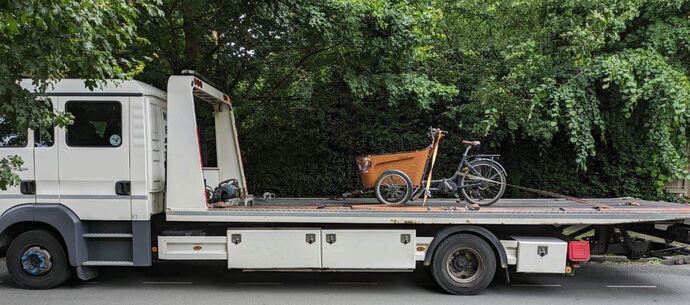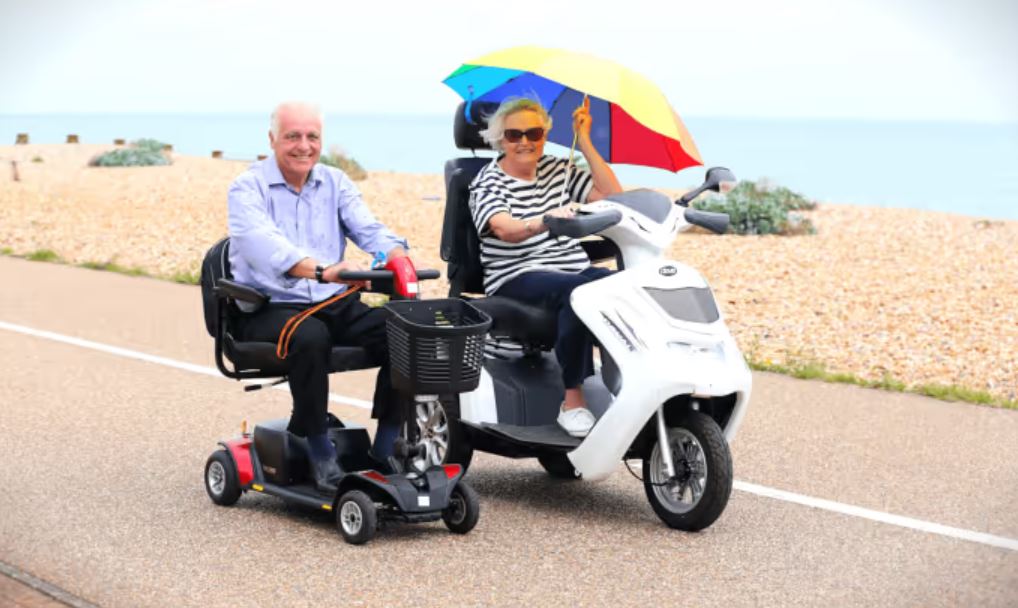What you need to insure your bicycle: Frame number, lock, storage & bike value
May 14, 2025

Insuring your bicycle or e-bike should be as straightforward as riding it, but sometimes the fine print can feel like you need a law degree and a magnifying glass. Don’t worry. Here’s a plain-English guide on what to expect when you cover your bike.
Frame number: The bike’s fingerprint
Think of your bike’s frame number like its National Insurance number. It's unique and helps prove it's yours. Most are stamped under the bottom bracket (that’s the bit where the pedals connect). On carbon frames, the number might be etched or appear on a sticker, and sometimes it plays hide-and-seek along the chain stay, down tube or top tube.
<div style="padding:56.25% 0 0 0;position:relative;"><iframe src="https://player.vimeo.com/video/193882600?badge=0&autopause=0&player_id=0&app_id=58479" frameborder="0" allow="autoplay; fullscreen; picture-in-picture; clipboard-write; encrypted-media" style="position:absolute;top:0;left:0;width:100%;height:100%;" title="How to find a bicycle frame number"></iframe></div><script src="https://player.vimeo.com/api/player.js"></script>
{{cta-cycling}}
Just a heads-up: Numbers starting with BS or EN are standard manufacturing codes – not your bike’s unique ID.
No number? No problem. Some bikes, especially older or carbon models, don’t have one. In this case, we ask that you mark your bike using a system like Datatag. It’s a clever combination of UV-visible etches and microscopic dots that embed a unique code on your bike’s frame and components – and yes, police do scan for them.
Bike locks: Not all are created equal
There’s a dizzying array of bike locks out there – some flimsy enough to be sliced with secateurs, others that could do a better job at resisting attack. At the ETA, we ask that you use a Sold Secure-rated lock – Silver or Gold, depending on your bike’s value (Gold for bikes worth over £1,000).
Crucially, you must secure the frame (not just the wheel) to something immovable. Cable locks? Avoid at all costs.

If you’re not sure about your lock’s rating, check with Sold Secure directly or give us a shout.
Proving you own the lock
It might seem a bit belt-and-braces, but if your bike is stolen, we’ll need proof you owned a suitable lock – after all, it’s a key part of your protection. You can send: A dated receipt (physical or online) showing the make and model; a PayPal or eBay transaction receipt; a valuation letter from a bike shop. Or, if that’s not possible, two photos – one of the lock on its own, and one showing it securing your bike
You’ll only be asked for this info should you make a claim, but if you’d like to send it to us ahead of time we’ll keep them safe for you.
{{cta-cycling}}
Storage: Common sense, with a few rules
Where you store your bike matters. If your bike’s kept in a shed, make sure the shed is locked (any type of lock will do us) and the bike is hidden from view. If there’s a window, cover it – or the bike itself. Inside the shed, we don’t insist on locking the bike to something solid, but make sure the door is kept locked.

Live in a flat or somewhere with communal storage? You’ll need to secure the frame with an approved lock to something immovable, and again – keep it out of sight.
As for street storage, if you leave your bike in a public area, make sure it’s correctly secured, and it can’t be left unattended for more than 18 hours (24 hours at a railway station) . Front gardens count as public places, so the same rules apply.
Got a back garden? The fence, hedge or wall needs to be at least 6ft high, with locked gates or doors. Your bike must be locked through the frame to an immovable object and not be visible to neighbours or passers-by.
Some councils now offer secure communal bike storage – think on-street lockers with resident-only keys. These are brilliant. If you use one, you’ll still need to lock the bike inside.
Bike value: Getting it right
One of the trickier bits of insuring a bike is knowing how much it’s worth if it’s secondhand or discontinued. Overvalue it and you’ll overpay for insurance. Undervalue it, and if it’s stolen or damaged, you could be left short.
If you don’t have a receipt, your local bike shop can help with a valuation or steer you toward a modern equivalent.
And unlike some insurers, we don’t play funny games with depreciation. Our policy really is new for old – no matter how old your bike.
We know this all sounds like a lot to consider, but if you have any questions we’re here to help; Give us a call on 0333 000 1234, drop us an email at customercare@eta.co.uk, or chat with us live on this website (Monday to Friday, 9am–5pm).
Cycle Rescue is free with ETA bicycle insurance
If you suffer a breakdown (including punctures, or even a flat e-bike battery) while out cycling, our 24-hour Cycle Rescue team is on hand to arrange transport for you and your bicycle to a safe location. The service is included for free with ETA cycle insurance, along with:
• Theft, accidental damage & vandalism
• E-bike battery theft cover
• Cycle Rescue
• No devaluation of your bike over time
• £2m third party PLUS £20,000 personal accident cover
• Shed and garage storage
• Low standard excess of 5% (£50 minimum)

{{cta-ebike}}
The ethical choice
The ETA was established in 1990 as an ethical provider of green, reliable travel services. Over 30 years on, we continue to offer cycle insurance , breakdown cover and mobility scooter insurance while putting concern for the environment at the heart of all we do.
The Good Shopping Guide judges us to be the UK's most ethical provider.
Information correct at time of publication.







